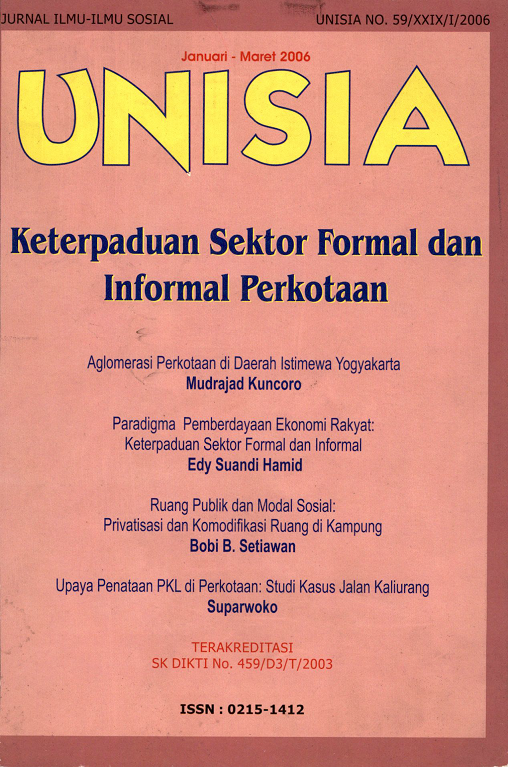Main Article Content
Abstract
Agglomeration has become a central attention in the literature of economic geography, business strategy and national competitiveness, and regional studies. However, we still know little of how common and widespread the phenomenon of agglomeration across regions, cities, and industries.
This paper explores the nature of agglomeration, where it tends to locate in DIY, and the driving forces underpinning agglomeration. It found that urbanisation and industrialisation tend to merge and form an extended city of Yogyakarta. The pattern and dynamics of agglomeration has been extending, albeit bringing wider inequality spatially. Hence, a common "spaceless" regional development strategy is urgently reformed.
Article Details
License
- Authors retain copyright and grant the journal right of first publication with the work simultaneously licensed under a Creative Commons Attribution License that allows others to share the work with an acknowledgement of the work's authorship and initial publication in this journal.
- Authors are able to enter into separate, additional contractual arrangements for the non-exclusive distribution of the journal's published version of the work (e.g., post it to an institutional repository or publish it in a book), with an acknowledgement of its initial publication in this journal.
- Authors are permitted and encouraged to post their work online (e.g., in institutional repositories or on their website) prior to and during the submission process, as it can lead to productive exchanges, as well as earlier and greater citation of published work.
How to Cite
Kuncoro, M. (2010). Aglomerasi Perkotaan di Daerah Istimewa Yogyakarta. Unisia, (59), 3–18. https://doi.org/10.20885/unisia.vol29.iss59.art10





